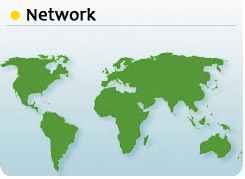Pipe fitting
Pipe fitting is the occupation of installing or repairing piping or tubing systems that convey liquid, gas, and occasionally solid materials. This work involves selecting and preparing pipe or tubing, joining it together by various means, and the location and repair of leaks.
Steel pipe
Steel pipe (or black iron pipe) was once the most popular choice for supply of water and flammable gases. Steel pipe is still used in many homes and businesses to convey natural gas or propane, and is a popular choice in fire sprinkler systems due to its high heat resistance. In commercial buildings steel pipe is used to convey heating or cooling water to heat exchangers, air handlers, fan coil, Variable air volume(VAV) device, or other HVAC equipment.
Steel pipe is sometimes joined using thread connections, where tapered threads (See National Pipe Thread) are cut into the tubing section end, sealant is applied in the form of thread compound or PTFE tape (also known as teflon tape) and it is then threaded into a corresponding threaded fitting using a pipe wrench. More often it is joined by welding, or by use of mechanical couplings, made by companies such as Victaulic or Grinnell that hold the pipe joint together via a groove pressed or cut (a rarely used older practice), into the ends of the pipes.
Other variations of steel include various stainless steel and chrome alloys. In high pressure situations these are usually joined by TIG welding.
Usages vary from country to country as different nations have different standards to install pipe.
In Canada, in respect to natural gas (NG) and propane (LP gas), black iron pipe (BIP) is used to connect an appliance to the supply, it must however be marked (either painted yellow or yellow banding attached at certain intervals) and certain restrictions apply to which nominal pipe size (NPS) can be put through walls and buildings. With propane in particular BIP can be run from an exterior tank (or cylinder) provided it is well protected from the elements and an anode-type of protection is in place for when the pipe is to be installed underground.
Copper tubing
Copper tubing is most often used for supply of hot and cold water, and as refrigerant line in HVAC systems. There are two basic types of copper tubing, soft copper and rigid copper. Copper tubing is joined using flare connection, compression connection, or solder. Copper offers a high level of resistance to corrosion, but is becoming very costly.
Flare connections
Flare connections require that the end of a tubing section be spread outward in a bell shape using a flare tool. A flare nut then compresses this bell-shaped end onto a male fitting. Flare connections are the most labor intensive of the three options, but are quite reliable over the course of many years.
Compression connections
Compression fittings use a soft metal ring (the compression ring) which is squeezed onto the pipe and into the fitting by a compression nut. The soft metal conforms to the surface of the tubing and the fitting, and creates a seal. Compression connections do not typically have the long life that sweat connections offer, but are advantageous in many cases because they are easy to make using basic tools. A disadvantage in compression connections is that they take longer to make than sweat, and sometimes require retightening over time to stop leaks.
Crimped or pressed connections
Crimped or pressed connections use special copper fittings which are permanently attached to rigid copper tubing with a powered crimper. The special fittings, manufactured with sealant already inside, slide over the tubing to be connected. Thousands of pounds-force per square inch of pressure are used to deform the fitting and compress the sealant against the inner copper tubing, creating a water tight seal. The advantages of this method are that it should last as long as the tubing, it takes less time to complete than other methods, it is cleaner in both appearance and the materials used to make the connection and no open flame is used during the connection process. The disadvantages are that the fittings used are harder to find and cost significantly more than sweat type fittings.
 CONTACT YOCHOIC
CONTACT YOCHOIC PRODUCTS LIST
PRODUCTS LIST
 Home>>Pipefittings knowledge>>Pipe fitting
Home>>Pipefittings knowledge>>Pipe fitting CONTACT YOCHOIC
CONTACT YOCHOIC PRODUCTS LIST
PRODUCTS LIST
 Home>>Pipefittings knowledge>>Pipe fitting
Home>>Pipefittings knowledge>>Pipe fitting